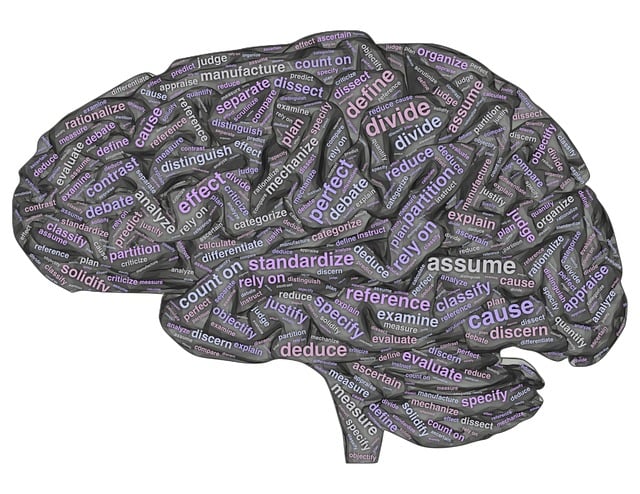AI to Predict XRP: Techniques and Strategy
Author: Jameson Richman Expert
Published On: 2025-11-02
Prepared by Jameson Richman and our team of experts with over a decade of experience in cryptocurrency and digital asset analysis. Learn more about us.
AI to predict XRP is becoming an essential tool for traders, analysts, and institutional teams who want data-driven forecasts of XRP’s price and on‑ledger activity. This article explains the end‑to‑end process for building robust AI forecasting systems for XRP: from data collection and feature engineering to model selection (classical and deep learning), evaluation, deployment, risk management, and practical trading use. It also links to vetted learning resources and trading platforms so you can apply models in real markets.

Why use AI to predict XRP?
Cryptocurrency markets are noisy, fast-moving, and influenced by a mix of on‑chain signals, market microstructure, macroeconomics, and sentiment. Traditional technical analysis alone often fails to capture complex, non‑linear patterns. AI systems—when built correctly—can:
- Process large, heterogeneous datasets (orderbooks, social media, ledger history).
- Detect non‑linear relationships and temporal dependencies using deep learning (LSTM, Transformers).
- Generate probabilistic forecasts and trading signals with quantifiable uncertainty.
- Automate continuous learning and adapt to regime shifts.
Overview of the forecasting workflow
A compact workflow for AI to predict XRP typically includes:
- Data collection and storage
- Feature engineering and labeling
- Model selection and training
- Backtesting and walk‑forward evaluation
- Signal generation and portfolio integration
- Monitoring, retraining, and risk controls
Data sources: what to collect
High-quality forecasts require diverse data. For XRP, consider combining the following:
- Market data: tick, trade, and candlestick data (spot and derivatives) from major exchanges (Binance, Bitget, Bybit, MEXC). Include volume, bid/ask, orderbook snapshots, and funding rates.
- On‑chain data: XRP ledger transactions, active addresses, token flows between exchanges, large whale movements, and ledger-specific metrics. Use official ledger explorers and APIs.
- Sentiment and social data: Twitter, Reddit, Telegram, news headlines, and Google Trends. Natural language processing (NLP) extracts sentiment and topic signals.
- Macro and correlated assets: BTC/ETH price, equity indices, interest rates, and macro news that often influence crypto risk appetite.
- Event and fundamental data: regulatory filings, court rulings (e.g., SEC‑related matters), partnership announcements, and upgrades by Ripple Labs.
Reliable public sources include the official Ripple site (ripple.com) and curated knowledge on XRP (XRP — Wikipedia).

Feature engineering: turning raw data into predictive signals
Good features often matter more than model complexity. Common engineered features include:
- Technical indicators: moving averages, RSI, MACD, Bollinger Bands, fractal dimension.
- Orderflow features: buy/sell volume imbalance, orderbook slope, depth at multiple price levels.
- On‑chain features: exchange inflow/outflow, active addresses, median transaction size, new addresses per day.
- Sentiment scores: daily sentiment polarity, subjectivity, topic frequencies from NLP models like BERT.
- Cross‑asset signals: BTC returns, volatility indices, correlation features.
- Time features: time of day, day of week, epoch markers for important events.
Tip: normalize features per rolling window, remove or winsorize outliers, and use lagged and differenced versions for stationarity.
Model choices: which AI methods work for XRP?
There is no “one best” model. Choose methods that match data types, sample frequency, and business objective. Typical categories:
Classical ML and statistical models
- Linear models (ridge/lasso) for baseline predictions.
- Tree‑based models (XGBoost, LightGBM, Random Forests) for tabular features and feature importance.
- ARIMA, GARCH for volatility modeling and as hybrid components.
Deep learning models
- LSTM/GRU: strong at modeling sequential dependencies in price and on‑chain time series.
- Temporal Convolutional Networks (TCN): lower latency and parallelization benefits.
- Transformers: state‑of‑the‑art for long-range dependencies and multi-modal inputs; adapt with time embeddings.
- Graph Neural Networks (GNNs): model XRP ledger as a transaction graph for node/edge features (whale behavior, cluster detection).
Hybrid and ensemble approaches
Combine probabilistic time series models with machine learning ensembles. For example, use an LSTM to produce a residual series that a tree model learns to correct, or ensemble several models with stacked generalization.
Labeling and prediction targets
Define your prediction target carefully:
- Point prediction: next‑period price or log‑return.
- Directional prediction: up/down move over a horizon (classification).
- Volatility forecasting: conditional variance for risk sizing.
- Probability distribution: predictive quantiles or full density (important for risk management).
For trading signals, directional and probability forecasts are often more robust than raw price point predictions.

Evaluation metrics and backtesting
Evaluate models on both statistical and trading metrics:
- Statistical: MAE, RMSE, MAPE for point forecasts; AUC, accuracy, F1 for classification; Brier score for probabilistic forecasts.
- Trading: cumulative P&L, Sharpe ratio, maximum drawdown, hit rate, information ratio. Use slippage, fees, and realistic fill assumptions in backtests.
- Robust validation: walk‑forward validation, nested cross‑validation, and out‑of‑sample periods across different market regimes.
Always test on unseen data and simulate latency and transaction costs. Overfitting to historical crypto rallies is common—techniques like time‑series cross‑validation and ensemble averaging help mitigate this.
Practical example: building an LSTM pipeline (outline)
Below is an outline of a practical pipeline to implement AI to predict XRP with an LSTM. This is a high‑level plan; production systems require additional engineering for data resiliency, monitoring, and governance.
- Data ingestion: stream minute-level exchange data and daily on‑chain metrics to a time-series DB (InfluxDB, TimescaleDB).
- Feature computation: compute rolling indicators and sentiment scores in batch (Airflow, Prefect).
- Dataset building: construct supervised windows (e.g., 60-minute window to predict next 30‑minute return).
- Scaling: apply per‑feature MinMax or Robust scaling computed only on training data.
- Modeling: LSTM with attention layer, dropout, and a final dense head for regression or classification.
- Training: use early stopping, learning rate schedules, and checkpointing on validation loss.
- Backtesting: convert predicted probabilities into position sizes (Kelly fraction or volatility scaling) and simulate trades with slippage and fees.
- Deployment: serve model via REST or gRPC, integrate with execution engine, and enable daily retraining triggers.
Pseudo-code sketch
Example pseudo-code for training loop (very condensed):
Prepare dataset: X_train, y_train, X_val, y_val
model = LSTMModel(...)
for epoch in range(max_epochs):
model.train_on_batch(X_train, y_train)
val_loss = model.evaluate(X_val, y_val)
if val_loss not improving: early_stop
Save best model
In practice, use frameworks like TensorFlow or PyTorch and tools like MLflow for experiment tracking.
Case study: interpretability and feature importance
Suppose your model consistently signals strong buys when:
- Exchange outflows spike (large deposits moving off exchanges),
- On‑chain active addresses increase plus positive social sentiment, and
- Bitcoin volatility is low (risk‑on carryover to altcoins).
Interpretation tools:
- SHAP values or permutation importance for tree models.
- Saliency maps and attention visualization for deep models.
- Partial dependence plots to inspect non‑linear responses.
Interpretable signals improve trader trust and make it easier to adjust models when regime changes occur.

Risk management and execution
Predictive models are only half of a trading strategy. You must also manage execution and risk:
- Position sizing: volatility scaling, fixed fraction, or Kelly adjustments with caps.
- Stop-loss and take-profit: rule‑based or model‑informed thresholds to limit drawdown.
- Liquidity considerations: avoid executing large orders in thin markets; use TWAP/VWAP algorithms for execution.
- Diversification: combine XRP signals with other assets to reduce idiosyncratic risk.
- Real‑time monitoring: P&L monitoring, anomaly detection on predictions, and auto‑shutdown triggers.
For practical trading setup, you can register and trade on major platforms—consider verified exchanges like Binance (Register on Binance), MEXC (Join MEXC), Bitget (Create Bitget account), and Bybit (Sign up on Bybit).
Common pitfalls and how to avoid them
Be aware of these frequent issues when using AI to predict XRP:
- Data leakage: features computed using future information inflate performance. Always compute features using only past data in train/test splits.
- Survivorship bias: using datasets that exclude delisted pairs or offline exchanges biases results.
- Overfitting: too many parameters vs data size. Use regularization, dropout, and simpler baselines.
- Regime shifts: crypto markets change quickly (e.g., bull vs bear markets). Use retraining schedules and model ensembles.
- Operation and latency: poorly engineered pipelines lead to stale predictions—invest in production engineering.
Regulatory, legal and ethical considerations
When building models that act in markets, consider regulatory and ethical implications:
- Stay informed about legal developments affecting XRP and Ripple Labs—regulatory outcomes can drastically alter liquidity and price dynamics. Reliable background can be found in public legal summaries and authority sites such as media coverage and official releases (for a general overview see government sources and court documents).
- Avoid market manipulation: ensure your strategies do not create false markets or exploit privileged information.
- Data privacy: if you ingest private or personal data (e.g., from chat logs), comply with privacy laws (like GDPR).

Tools, libraries and infrastructure
Software and services commonly used to build AI forecasting systems:
- Languages: Python (primary), R for analytics.
- ML frameworks: TensorFlow, PyTorch, scikit‑learn, XGBoost, LightGBM.
- Time-series and stream processing: Pandas, Dask, Kafka, Apache Flink.
- Databases: TimescaleDB, ClickHouse, InfluxDB, MongoDB for unstructured data.
- Cloud: AWS/GCP/Azure GPU instances, managed ML services for training and serving.
- Monitoring: Prometheus, Grafana, Sentry for logging and alerts.
Example architectures for production
Two common architectures:
Batch learning with daily retrain
- Collect daily data, retrain once per day, serve predictions for the next 24 hours.
- Good when latency is not critical (swing trading).
Online learning and streaming predictions
- Real‑time ingestion of tick data, model updates with mini‑batches, low‑latency serving for intraday execution.
- Requires stronger data engineering, but better for high-frequency strategies.
Benchmarking and performance monitoring
Track both ML metrics and business KPIs:
- Model drift: track distributional changes in features and labels.
- Prediction quality: maintain a dashboard for MAE/accuracy over time.
- Strategy P&L: daily P&L, risk-adjusted returns, transaction costs.

Where to learn more and related resources
To deepen forecasting and trading skills, these curated reads provide concrete trading and market analysis techniques that complement XRP forecasting:
- Advanced trading techniques for consistent results — useful for execution and strategy design across cryptos.
- Long-term crypto forecasting (Bitcoin 2050) — for perspective on long‑horizon models and macro assumptions that also apply to altcoins like XRP.
- Decadal forecasts and scenario planning — useful to build scenario‑aware AI models and backtests.
- Is Binance safe for trading? — important reading when choosing custody and exchange counterparties.
- How to use the Binance app for mobile trading — helpful for manual execution and monitoring when automation is not used.
Applying AI signals to real trading: step-by-step
Practical steps to convert model outputs into tradable actions:
- Design the signal rule: e.g., long if P(up|X) > 0.6 and model confidence above threshold.
- Map probability to size: size = base_size * (2*P - 1) clipped between min/max.
- Implement execution constraints: maximum daily volume, per‑trade slippage caps, and order types (limit, market, iceberg).
- Simulate with realistic fills and fees in backtests.
- Deploy with phased rollout: paper trading, small capital, then scale up with monitoring.
Real examples and hypothetical results
Example scenario: intraday LSTM model trained on minute bars and orderbook features. After walk‑forward testing across several months and including regime tests, you might observe:
- Directional accuracy ~ 58% on 30‑minute horizon (above random 50%).
- Sharpe improvement when combined with volatility‑scaled position sizing.
- Model performance degrades during sudden regulatory news events—requiring quick retrain or guardrails.
These are hypothetical; actual outcomes depend on data quality, engineering, and market conditions.

Future trends: what’s next for AI forecasting in crypto
Expect several developments that impact how AI to predict XRP evolves:
- Better multi‑modal models that fuse on‑chain graphs, orderbook microstructure, and text at scale (transformer architectures adapted for time series and graphs).
- Improved probabilistic forecasting and uncertainty quantification for safer trading decisions.
- Federated and privacy‑preserving models for shared intelligence between exchanges and institutions.
- Regulatory clarity and on‑chain analytics maturation that provide richer labeled events.
Further reading and useful links
High authority resources that help deepen knowledge:
- XRP — Wikipedia for background on the protocol and asset.
- Ripple official site for protocol updates and partnerships.
- For legal histories and important rulings affecting XRP, consult official court repositories and regulator statements (search SEC releases and court dockets for the latest rulings).
Actionable checklist to get started
Use this checklist to start building an AI pipeline to predict XRP:
- Choose prediction horizon (minutes, hours, days) and objective (directional vs point forecast).
- Set up data pipelines for exchange (orderbook/trades) and on‑chain metrics.
- Implement baseline models (moving average, logistic regression) to set performance benchmarks.
- Experiment with tree models and one deep learning architecture (LSTM or Transformer).
- Validate thoroughly with walk‑forward testing and realistic transaction cost assumptions.
- Establish risk rules and production monitoring before deploying capital.

Conclusion
Using AI to predict XRP offers extensive opportunities but demands strong data engineering, rigorous validation, and disciplined risk management. Start with solid baselines, diversify models, and prioritize interpretability and monitoring. For trading infrastructure and strategy inspiration, explore both execution guides and analytic deep dives—see advanced trading techniques and long‑term forecasting resources mentioned above for practical ideas. When ready to trade live, consider reputable exchanges (Binance, MEXC, Bitget, Bybit) and ensure you understand custody, security, and regional regulations before scaling positions.
Further reading to expand your approach:
- Advanced Bitcoin trading techniques for consistent results — adapt execution and risk rules to XRP strategies.
- Long-term crypto forecasting (Bitcoin 2050) — scenario thinking for multi‑year strategies.
- Decadal forecasting case studies — for macro overlays and capital allocation.
- Is Binance safe for trading? — guidance on exchange safety.
- How to use the Binance app — useful for manual trade execution and monitoring.
If you’d like, I can provide a sample feature list tailored to a specific prediction horizon (e.g., 5‑minute, 1‑hour), pseudo‑code for a Transformer architecture adapted to time series, or a checklist for production deployment. Which would you prefer?